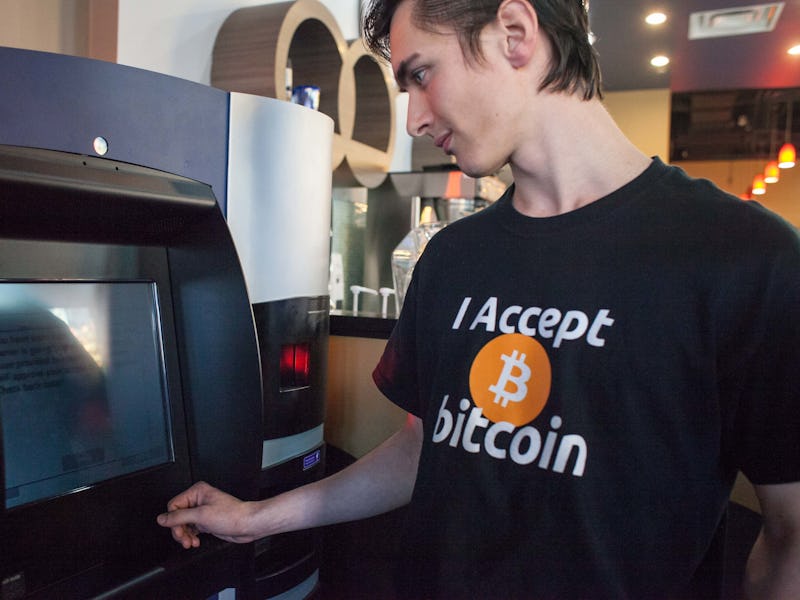Bitcoin Avoided a Fork with One "Awesome" "Positive Change"
Experts think this could be good news.

August 1 could have been a massive, chaotic day for bitcoin. But thanks to a recently deployed software hot fix, the world’s leading cryptocurrency shouldn’t suffer a fork — or split in the currency — and two experts say that’s a pretty good thing.
In late July, bitcoin’s biggest problem came to a head. The currency’s foundation, a permanent, public ledger system called the blockchain, was too slow to accommodate the number of transactions per second it needed to. Since bitcoin has no formal regulatory body or administrative system, there were several different plans for the future of the currency. But after a few days, one plan — a moderate solution called BIP 91 — won out, and experts say that’s a pretty good thing.
“BIP 91 is awesome, because it got SegWit activated,” Victoria Van Eyk, a partner at Bitcoin Strategy Group and independent cryptocurrency analyst tells Inverse. SegWit refers to an update to bitcoin’s software called segregated witness, which changes the data format of bitcoin’s “blocks” to take up less space in the blockchain. “Adopting SegWit,” Van Eyk said, is a “Unilaterally positive change.”
Most experts, including the powerful groups that do the majority of bitcoin “mining,” which introduces new coins to the system and creates the blockchain piece by piece, think that SegWit is a positive change. But some of the larger, more powerful groups think it doesn’t go far enough, and want to go a step further, to SegWit 2X. Their plan is to double the size of the blockchain’s units, blocks, increasing transactions speeds but creating a system that heavily favors miners and users with expensive, souped-up computing systems.
No, these aren't blocks on the blockchain, but computer units like this can mine them!
James Hilliard, the lead programmer behind BIP 91, has been outspoken against this plan, calling it “nutty,” in an interview with CoinDesk, especially on that short of a timeframe. “There are just so many things that could go wrong,” he said.
For a while, it appeared that a plan involving SegWit 2X had enough support to be put into action, which would have split the bitcoin blockchain in a hard fork, making the new system inaccessible to users who didn’t want to update. Unlike this hard for, BIP 91 is backward compatible and brings the entire community along. On July 23, enough bitcoin miners had pledged their support to the fix that it was locked in.
“I think August 1 will be like any other day,” Marek Palatinus, the CEO of Satoshi Labs, told Inverse,because it will keep the existing system largely intact, without provoking a user-activated fork. “I’m very positive on BIP91. In my opinion, Segwit is a good way forward for Bitcoin. It fixes many things which complicated work of Bitcoin developers.”
One interesting development, however, is that there will be a hard fork on August 1 — but not in the way analysts initially feared. Because bitcoin is open source, anyone can adopt the technology or spin it off into a different system. Recently, a group of miners announced that they would create a new cryptocurrency based on bitcoin, called Bitcoin Cash, which increases the size of bitcoin blocks to eight megabytes (in the original system, they’re only one megabyte). But Bitcoin Cash’s spinoff won’t disrupt the entire currency in the same way that SegWit 2X would have, so for now, experts are optimistic.
“I don’t see Bitcoin Cash as a threat to bitcoin and I don’t expect any network disruption on August 1 caused by Bitcoin Cash activation,” Palatinus says.